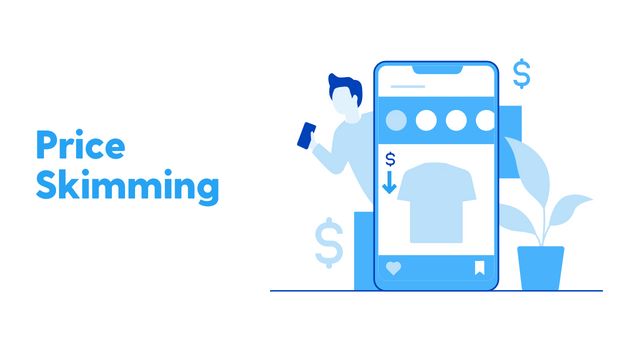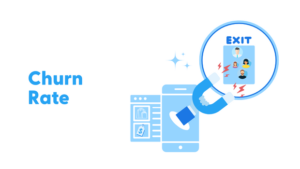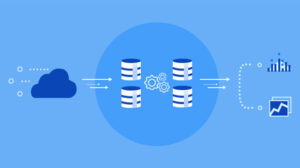Price skimming is a pricing strategy in which a company sets a high initial price for a new product or service and then gradually lowers the price over time as competitors enter the market or as the product reaches a wider customer base.
Price skimming is effective because it allows a company to recoup its costs quickly and creates a perception of exclusivity and high quality. Additionally, it can generate high profits in the short term before competition enters the market and prices decrease.
Mastering Price Skimming
Mastering price skimming is a process that requires a combination of market research, strategic planning, and ongoing monitoring and adjustment. Here are 11 price skimming strategies:
- Understand your target market: Conduct market research to understand your target market, including their needs, preferences, and price sensitivity.
- Identify your unique selling proposition: Determine what makes your product or service unique or valuable and how you can communicate this to your target market.
- Set a high initial price: Based on your understanding of your target market and unique selling proposition, set a high initial price for your product or service.
- Gradually lower the price: Over time, gradually lower the price to attract more price-sensitive customers and increase your market share.
- Monitor and adjust: Continuously monitor the market and adjust your pricing strategy as necessary. Be prepared to lower or raise the price if the market changes or competition enters.
- Communicate value: Communicate the value and quality of your product or service through marketing, branding, and customer service to justify the premium price.
- Bundle with complementary products or services: Create a bundle to increase the perceived value and justify a higher price.
- Use psychological pricing: Use psychological pricing techniques such as odd pricing (e.g. $9.99 instead of $10) to make the price appear more attractive to consumers.
- Monitor competition: Monitor the market and competition continuously, and adjust pricing accordingly.
- Use dynamic pricing: Implement dynamic pricing, which allows the company to adjust prices in real-time based on demand and competition.
- Use loyalty programs and rewards: Encourage repeat business by offering loyalty programs and rewards that offer discounts or other incentives for repeat customers.
Mastering price skimming requires ongoing monitoring and adaptation to market conditions, but by understanding your target market and unique selling proposition, setting a high initial price, and gradually lowering the price over time, you can effectively implement this pricing strategy.
Relationship between Premium Pricing and Price Skimming
Premium pricing is a pricing strategy in which a product or service is sold at a higher price point than similar products or services in the market. This strategy is often used for luxury or high-end products and services, as well as for products or services that have a strong brand or reputation.
Premium pricing and price skimming are related in that they both involve charging a high price for a product or service. However, the main difference between the two is that premium pricing is used for luxury or high-end products and services, while price skimming is used for new products or services.
Strategies for Implementing Premium Pricing in Conjunction with Price Skimming
When implementing premium pricing in conjunction with price skimming, a company can use the following strategies:
- Start with a high initial price: The company sets a high initial price for the product or service based on its perceived value, exclusivity, or uniqueness.
- Target high-end consumers: The company targets high-end consumers who are willing to pay a premium price for the product or service.
- Use limited-time offers: The company can use limited-time offers, such as discounts or promotions, to attract more customers.
- Create a sense of scarcity: The company can create a sense of scarcity by limiting the availability of the product or service, making it more exclusive and valuable.
- Build a strong brand: The company can build a strong brand that conveys the value and quality of the product or service, making it more attractive to high-end consumers.
- Use market segmentation: The company can segment the market and target different segments with different prices, targeting the high-end consumers for premium pricing.
- Lower the price gradually: As the product or service becomes more widely available, the company gradually lowers the price over time.
Overall, implementing premium pricing in conjunction with price skimming can be an effective strategy for companies that offer unique, high-quality, or exclusive products or services that target high-end consumers.
Also, read:
How to Identify the Right Market to use Price Skimming
Identifying the right market for using price skimming requires a combination of market research and strategic analysis. Here are some steps a company can take to identify the right market for price skimming:
- Understand your target market: Conduct market research to understand your target market, including their needs, preferences, and price sensitivity.
- Identify your unique selling proposition: Determine what makes your product or service unique or valuable and how you can communicate this to your target market. Read more – Value Proposition
- Assess market conditions: Analyze market conditions, including the size and growth potential of the market, competition, and trends.
- Identify market segments: Segment the market to identify different groups of consumers with different needs, preferences, and price sensitivities.
- Evaluate the price elasticity of demand: Determine the price elasticity of demand for your product or service. A product or service with inelastic demand is more suitable for price skimming.
- Look at the product life cycle: Consider the product life cycle, if the product is in the introduction or growth phase, price skimming may be more appropriate.
- Analyze your cost structure: Understand your cost structure, and ensure that a high initial price will enable you to generate enough profit to justify the strategy.
- Assess the market positioning: Assess how your product or service is positioned in the market, and whether a premium price would be justified based on the product’s perceived value and uniqueness.
By conducting market research and analyzing market conditions, a company can identify the right market for using price skimming. This market should have inelastic demand, a high perceived value, and a growth or introduction phase in the product life cycle, among other characteristics.
How to Segment your Market for Maximum Effectiveness with Price Skimming
Market segmentation divides a market into smaller groups of consumers with similar needs or characteristics. It is important in pricing strategy because it allows companies to tailor their pricing to different segments of the market, rather than using a one-size-fits-all approach. By segmenting the market, companies can identify and target specific groups of consumers with different price sensitivities and tailor their pricing accordingly.
This can help them increase profits and market share by charging premium prices to segments willing to pay more and attracting price-sensitive segments with lower prices.
To segment your market for maximum effectiveness with price skimming, a company can take the following steps:
- Conduct market research: Understand your target market, including their needs, preferences, and price sensitivities.
- Identify segments: Use criteria such as demographics, psychographics, and behavior to segment the market into smaller groups of consumers.
- Analyze segments: Analyze each segment to understand their size, growth potential, and price sensitivity.
Select target segments: Select the most profitable segments with the highest potential for growth. - Tailor pricing: Tailor pricing to the different segments, using premium pricing for segments that are willing to pay more and lower prices for price-sensitive segments.
- Monitor and adjust: Continuously monitor the market and adjust your segmentation and pricing strategy as needed.
Also, read:
The Psychology of Pricing: How to use Anchoring with Price Skimming
Anchoring in pricing psychology refers to an initial price or reference point influencing people’s perception of value. When consumers are presented with a price, their subsequent judgments of other prices are anchored to the initial price. Anchoring can influence consumer perception of value and make a higher price appear more reasonable.
Anchoring can be used in conjunction with price skimming by using a high initial price as the anchor and then gradually lowering the price over time. This can help to justify the high initial price and increase the perceived value of the product or service. Additionally, gradually lowering the price can attract price-sensitive customers who may not have been willing to pay the high initial price.
Here are some techniques and strategies for implementing anchoring in your business:
- Offer a high-end option: Offer a high-end option at a premium price, this can serve as the anchor for other prices.
- Use bundle pricing: Bundle several products or services together at a higher price, this can make the individual prices of each item appear more reasonable.
- Offer discounts or promotions to make the regular prices appear more reasonable.
- Use psychological pricing: Use psychological pricing techniques such as odd pricing to make the price appear more attractive and reasonable.
- Use comparison pricing: Use comparison pricing to show the consumer the savings they would receive by purchasing at the current price, this can make the price appear more reasonable.
- Use social proof: Use social proof, such as customer reviews, testimonials, or case studies, to show the value of the product or service, this can help to anchor the price.
- Use loss aversion: Use loss aversion, by creating a sense of scarcity or urgency, this can create a fear of missing out, which can make the price appear more reasonable.
By implementing these techniques and strategies, a company can use anchoring to influence consumer perception of value and make a higher price appear more reasonable, which can be beneficial when using price skimming.
How to Crush your Competition using Monopoly Pricing with Price Skimming
Monopoly pricing is a pricing strategy used by companies that have a monopoly, or near-monopoly, in a market. A company that holds a monopoly in a market has the power to set prices at a level that would be considered high by normal market standards because they are the sole seller of a good or service, and there are no competitors to put pressure on prices.
Monopoly pricing can be related to price skimming as both strategies aim to maximize profits by charging high prices. However, while price skimming is typically used by companies introducing new products or services, monopoly pricing is used by companies with market power.
Strategies for implementing monopoly pricing in conjunction with price skimming include:
- Maintain market power: Use strategies such as patents, trademarks, and barriers to entry to maintain market power and prevent competition.
- Continuously innovate: Continuously innovate and improve products or services to justify high prices.
- Use price skimming: Use price skimming to maximize profits by charging high prices initially, then gradually lowering prices over time.
- Monitor and adjust: Continuously monitor the market and adjust pricing as needed.
- Use market segmentation: Identify and target different market segments with different prices to maximize profitability.
- Communicate value: Communicate the value and quality of the product or service through marketing, branding, and customer service to justify the premium price.
- Be aware of legal restrictions on monopolistic practices, such as anti-trust laws, and ensure that pricing strategies comply with these regulations.
By implementing these strategies, a company can use monopoly pricing in conjunction with price skimming to maximize profits while maintaining market power and preventing competition. However, it is important to note that this type of pricing strategy could bring legal and social repercussions and it’s not suitable for every market or company.
The Secret to Pricing: Using price Elasticity of Demand with Price Skimming to Increase Profits
Price elasticity of demand is a measure of how sensitive the demand for a product or service is to changes in price. It is important in pricing strategy because it helps a company understand how price changes will affect demand and, thus revenues and profits.
If demand for a product is elastic, a small increase in price will result in a large decrease in demand and, thus, a decrease in revenues and profits. In contrast, if demand is inelastic, a small increase in price will result in a small decrease in demand and thus, only a small decrease in revenues and profits.
To use price elasticity of demand to increase profits with price skimming, a company can use the following steps:
- Determine the price elasticity of demand for their product or service.
- If demand is inelastic, a company can use price skimming to charge a high initial price and gradually lower the price over time. This can help the company to maximize profits while still attracting and retaining customers.
- If demand is elastic, a company should be more cautious when setting prices, as a high initial price may cause a large decrease in demand. In this case, a company could consider using other pricing strategies, such as penetration pricing or value-based pricing.
Techniques and strategies for implementing price elasticity of demand analysis in your business include:
- Conduct market research: Understand your target market, including their needs, preferences, and price sensitivities.
- Use survey methods: Use surveys or experiments to gather data on how changes in price affect demand.
- Use historical data analysis: Analyze historical data on sales and prices to understand how changes in price
Also, read:
Conclusion
In conclusion, price skimming is an effective pricing strategy that can help drive profits when used in conjunction with other strategies such as customer or market segmentation and analyzing the performance of different cohorts.
To take advantage of this strategy, consider working with Saras Analytics to set up tracking and automated dashboards to gather data and make informed decisions about high-performing segments and cohorts. Contact us to learn more about how we can help you implement a successful price-skimming strategy.













